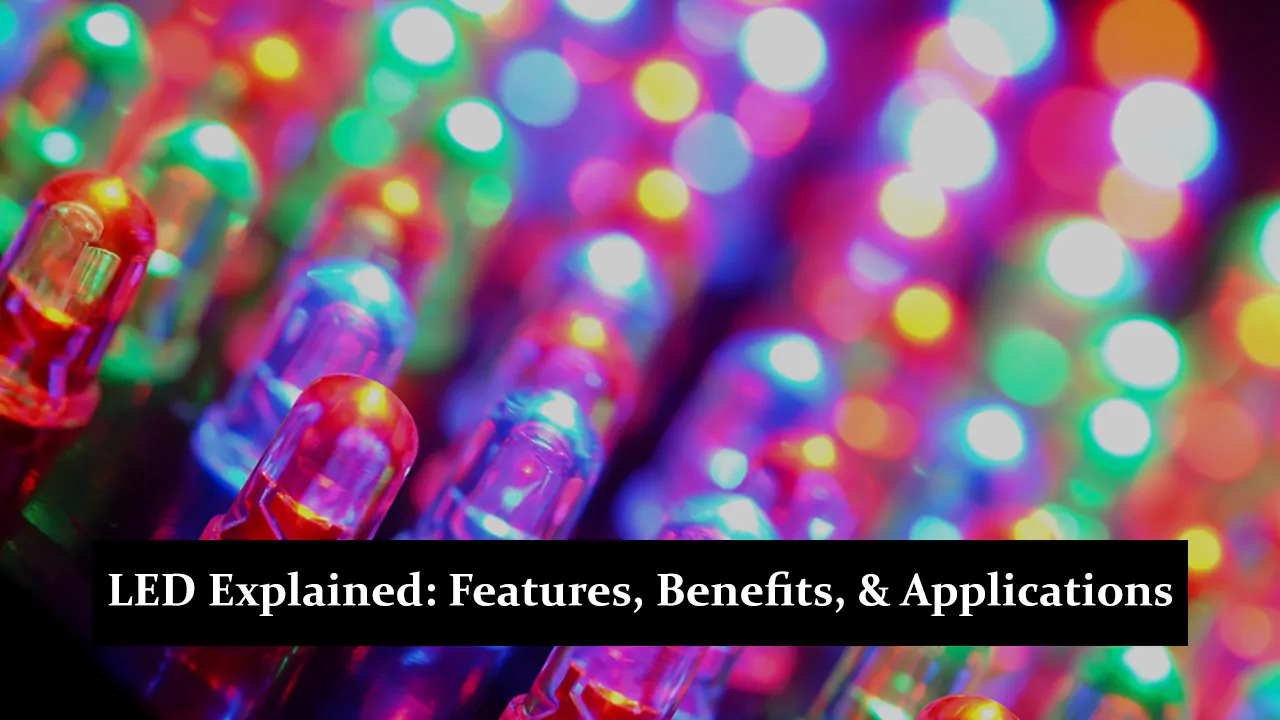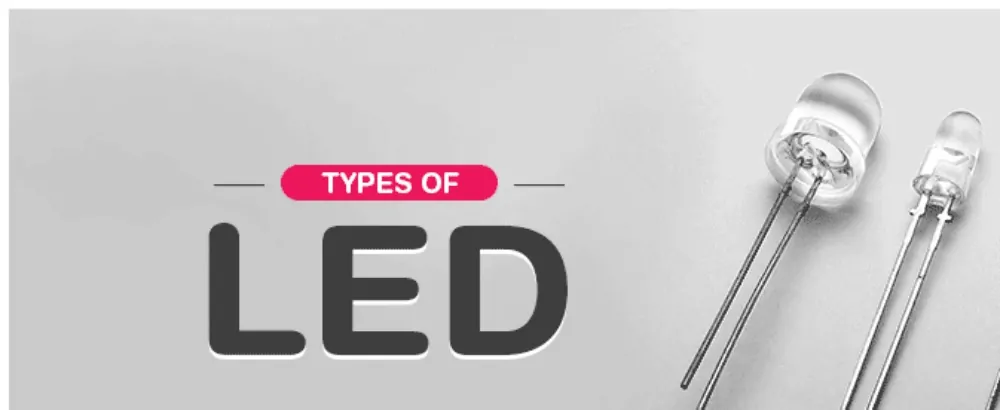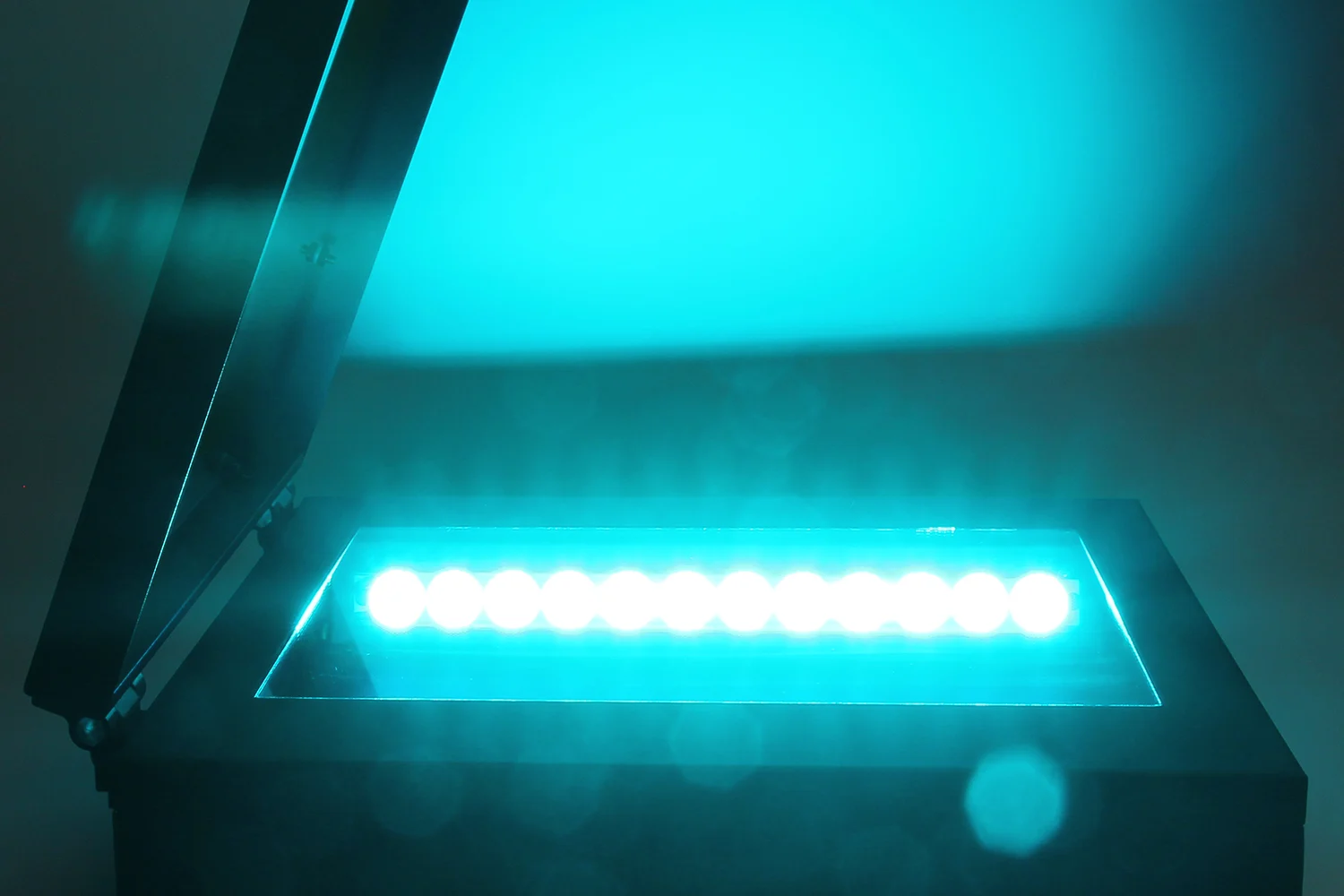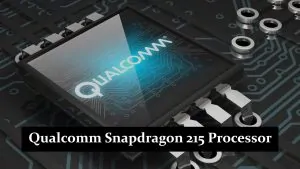LED (Light-Emitting Diode) is a small electronic device that produces light when an electric current passes through it. Unlike traditional light bulbs, LEDs are highly energy-efficient and last much longer. They are used everywhere, from household lighting to electronic mobile phones and TV displays. LEDs have become a key technology today because they offer better performance while using less energy. This makes them important for saving power and reducing environmental impact.
How LEDs Work
LEDs emit light through a simple process. When an electric current flows through the diode, it excites particles inside the semiconductor material, causing them to release energy in the form of light. The structure of an LED includes two layers of semiconductor materials, one positive and one negative, which create the conditions for this light emission. Unlike regular bulbs, LEDs don’t use filaments, making them more durable and efficient.
Types of LEDs
- Single-Colour LEDs: Emit light in one specific colour (e.g., red, blue, or green).
- RGB LEDs Combine red, green, and blue to create different colours. They are often used in displays and decorative lighting.
- Infrared LEDs: Used in devices like remote controls and security cameras.
- Ultraviolet LEDs: Used in sterilisation, UV curing, and other specialised applications.
Key Features of LEDs
- Energy Efficiency
LEDs use less power than traditional lighting technologies like incandescent and CFL bulbs. They convert most electricity into light rather than heat, making them more energy-efficient. This means they save electricity and reduce energy bills. - Longevity
One of the biggest advantages of LEDs is their long lifespan. LEDs can last up to 25 times longer than incandescent bulbs, so you won’t need to replace them as often. This also means less maintenance over time, saving both money and effort. - Instant Lighting
LEDs provide full brightness instantly as soon as they are switched on. Unlike traditional bulbs, they don’t need time to warm up, making them ideal for environments where immediate light is necessary, like homes or offices.
Benefits of LED Technology
- Eco-Friendly and Energy Savings
LEDs are much more energy-efficient than traditional lighting, consuming less electricity to produce the same amount of light. This reduced energy consumption helps lower carbon footprints, making LEDs an eco-friendly option. LEDs can contribute to significant energy savings at home and in large-scale applications. - Durability and Safety
LEDs are built to last and are highly durable. They resist shocks, vibrations, and external impacts, making them ideal for rough environments. LEDs operate at much lower temperatures than traditional bulbs, reducing the risk of overheating or fire hazards and making them safer for use in homes and businesses. - Versatility in Applications
LEDs are incredibly versatile and are used in a wide range of applications. LEDs have become an essential technology in many fields, from everyday home lighting to automobile headlights, streetlights, industrial displays, and electronic devices like TVs and smartphones. Their adaptability and efficiency suit nearly any lighting or display need.
Applications of LEDs
- LED Lighting Solutions
LEDs are widely used in residential, commercial, and industrial lighting setups. They provide energy-efficient lighting for homes, offices, factories, and even streetlights, reducing electricity consumption while offering bright, reliable light. - Display Technologies
LEDs, which are used in televisions, smartphones, and computer screens, are crucial in digital displays. Their ability to produce clear, vibrant colours makes them ideal for high-quality visual displays. - Automotive Industry
In the automotive world, LEDs are commonly used for car headlights, taillights, and interior lighting. They are preferred because of their brightness, energy efficiency, and long lifespan, making vehicles safer and more stylish. - Medical and Industrial Uses
Due to their precision and reliability, LEDs are also used in medical devices, such as surgical lights and diagnostic tools. LEDs help with efficient operation and energy conservation in industrial machinery, making them an essential part of various industries.
LEDs vs. Traditional Lighting Technologies
| Feature | IPS LCD | OLED | AMOLED | TN (Twisted Nematic) LCD |
| Picture Quality | Excellent colour accuracy, wide angles | Rich colours, true blacks, superior contrast | Brighter, deeper blacks, higher contrast | Limited colour accuracy, narrower angles |
| Power Consumption | Higher power consumption due to backlighting | Lower power usage as individual pixels emit light | Lower power consumption than IPS, especially for dark images | Lower than IPS but less efficient than OLED |
| Lifespan | Long-lasting, durable in various lighting conditions | Shorter lifespan due to organic materials degrading | Similar to OLED but slightly more durable | Long lifespan but lower picture quality |
| Black Levels | Good, but backlight affects deep blacks | Perfect black levels due to no backlight | Perfect black levels, excellent contrast | Poor black levels, as backlight bleeds into dark areas |
| Brightness | Bright, good for outdoor visibility | Less bright but still clear | Very bright, more suitable for outdoor use | Moderate brightness, not ideal for outdoor use |
| Viewing Angles | Excellent, consistent across angles | Great, consistent at wide angles | Excellent, with minimal colour distortion | Limited viewing angles with colour shift |
Conclusion
LED technology stands out for its energy efficiency, long lifespan, and versatility across various fields, from home lighting to advanced medical devices. LEDs save power, reduce costs, and offer reliable performance, making them preferred over traditional lighting solutions. As technology advances, the potential of LEDs will only continue to grow, with new applications emerging in smart lighting, displays, and beyond. With their eco-friendly and durable nature, LEDs are set to revolutionise industries for years to come, driving innovation and sustainability.





